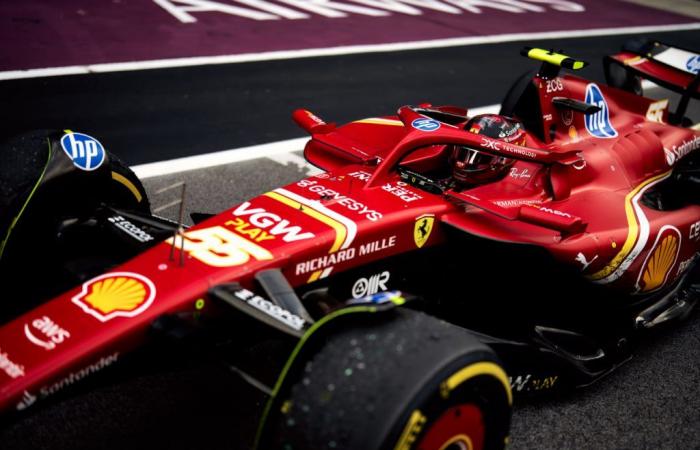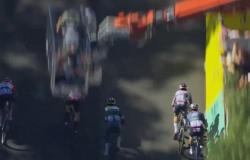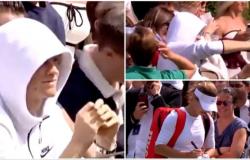Ferrari it’s a team Of F1 currently in difficulty: denying it would be rather foolish. We have all understood it a little, as the red team has been disappointing in recent weeks and the expected steps forward are not there. As always in the top category of motorsport, attributing the poor results to a single factor is not wise. On the contrary, the elements to be examined are different and added together they contribute to the current status of the Italian stable. prancing Horse far from on the ball, unfortunately, detached from Red Bull e McLarensurpassed by the recovery of Mercedes.
Il team Of Maranello did not enter the current season expecting to win. On the contrary, the target it was clear: continue to grow as a team and try to annoy the reigning world champions. The start in this sense has been good. There have been steps forward compared to the last championship and up to Monaco, where Ferrari won the title of best by beating everyonethe hopes of a further step towards increasing the yield were at least palpable. Then, suddenly, darkness. The light went out and the correct working point of the SF-24 it was lost.
Frederic Vasseur, Carlos Sainz e Charles Leclerc has made known a certain disappointment. It could not be otherwise. The “two Charleses” are anxiously awaiting the resolution of the problems, because the SF-24 pre Spain if it was playing to win and it seemed very close to the desired goal: a car that could fight at the top in any competitive scenario. This was not the case and looking at the numbers the involution of the last two world championship trips hurts. The supporter deluded once again. A brief recap of what happened can help us understand what happened and what will happen to the red one 2024.
F1, Ferrari: the chronology of developments on the SF-24
Let’s start from Imola Grand Prixcompetitive scenario where the team Italian introduced the first package of updates on the SF-24. Up-date which as we know actually debuted in testing at Flowerfirst taste of the new products produced by the technical department headed by Enrico Cardile. We are talking about upgrades that aimed at a significant leap in quality. In part, the aspirations were achieved because on the Italian circuit the red car undoubtedly showed superior performance. Compared to the rest of the competitors who seem to have snubbed this solution, Ferrari he adopted the inverted bellies.
Shark inlet in stile Red Bull to make the undercut area larger. Technical path that seemed the best to follow at that precise moment. Solution implemented very quickly that should have offered, in theory, significant advantages over direct competition. However, things did not quite go that way, as months later Ferrari it hasn’t kept up with the times at all Red Bull e McLaren losing ground even on the team of Brackelyas mentioned. We come to the Spain: il team features a new floor, refined sidepods and even a different rear wing specification.
Useful solutions to increase the load and stabilize the aerodynamic platform of the SF-24. The floor of a F1 is the element that produces the highest percentage of vertical thrust. The aim was to widen the window of set-up with a “clean” load that allows the car to increase performance without the worry of the downforce generated by the wings. An aspect that also contributes to the management of the tires in relation to the hysteresis cycle of the tire. Increase even more the predictability of the car and, indeed, throw down the gauntlet to the best with the right weapons in hand.
F1, Ferrari: problems and strengths of the SF-24 before and after the update
While Leclerc had the old bottom at Barcelona he didn’t find it anyway l’handling satisfactory. The changes were meant to address deficient areas of the car with a wider and more flexible operating window. SF-24 which until the Iberian track had shown good references in fast curves, especially in those in support. While in the more guided sections it struggled more, especially if a certain compromise in terms of rigidity between high and low speed was necessary. Ferrari has always suffered from oversteer since the pre-season tests of the Bahrainin February.
A feature that was partly intended and had never caused excessive discomfort to pilots. From a purely technical point of view, it is not at all simple to understand and explain what is happening to the Ferrari. There has been a lot of talk recently about the porpoising in fast corners. Sainz has done it often, while Leclerc admits the problems but does not talk about this issue. Without a doubt, a certain degree of bouncing exists in the high-speed corners. We have seen it in SpainIn the T3or in Austria In the T2. A phenomenon that also affects other cars, see Mercedesalbeit in a different way.
However, there are several factors that come together in this crisis. Ferrari. For the slow curves the technicians intervened with step targeted, both from a suspension and aerodynamic point of view, to provide more grip to the red. To make the aerodynamics of the SF-24 when cornering at high speed, the degree of stiffness of the suspension was very high. A factor that produces an imbalance in the driven sections. It’s then up to the team adopt a set-up suspension and a kinematics that still allows for the generation of a lot grip mechanical. A question that is far from simple.
Ferrari has lost something in terms of performance in the fast sectionsfact. In Austriabut also in Spainthe red one was not at the level of the other top cars, despite having a high potential in this type of curve. The question is: is the new fund working properly? It would seem so, listening to the confirmations of pilots and technicians. Spielberg Initially, an attempt was made to optimize the fast sections. However, very soon, the team he realized through the feedback very negative of Leclerc that the low speed performance thus suffered a real collapse.
The Monegasque complained of a strong lack of general grip in the driven sections. First and second sectors, to be clear. Ferrari has therefore tried to improve the performance in slow curves by removing stiffness from the suspension system. By reflection, the bottom showed less load effectiveness in wide radius curves. Furthermore, the rear wing did not generate a surplus of vertical thrust that could stabilize the rear. Spanish medium-high load specification that was not used because the excessive drag produced would have slowed the red one down too much.
The aerodynamic efficiency of the Ferrari it is not competitive at the level Red Bull o McLarenan aspect in which the progress made was less than expected. Without the adequate load on the rear axle, the drivers could do little well in Austria. From the centre of the curve onwards the SF-24 was in fact destabilized, giving rise to excessive rotation (oversteer) which slows down performance. This element emerged on both cars, particularly between turns 6 and 7 of Spielberg. Adding all the factors together we saw ineffectiveness in both the slow and fast corners. Let’s look at the qualifying performance in bend #3.
Ferrari arrives with a delay from Verstappen of only 0.055s, but in the curve the gap increases significantly especially between the apex and the exit. In fast curves, due to a strong instability between the curve and the exit, the SF-24 loses another 2 tenths. On entry and exit, a more understeering car would be needed, because this characteristic generates greater stability. While at the apex, a small degree of oversteer is useful to make the car rotate. Ferrari had excessive rotation that lingered on the exit and delayed the moment the pilots went on the gas. There was also no shortage of controls on the steering wheel.
The operating window of the Italian single-seater is currently narrower. A short blanket, where taking advantage of one section means ruining another. We are talking about a consequence also related to the improvement of performance direct competitors such as Red Bull e McLaren, F1 now very complete if compared to the red one. An aspect that beyond any specific technical discussion has influenced more in the last two week-end. As mentioned, tuning a car with a narrow window doesn’t work, as there is no real compromise between slow and fast.
Il porpoising it is a problem that is added to a much wider and more complex scenario. It is therefore reductive to consider aerodynamic hopping as the only problem. A phenomenon that as mentioned is also present on other cars and on the SF-24among other things, was not missing even in the first part of the season. It is a phenomenon that the teams have learned to manage. Ferrari is currently struggling to manage after the fund updates. A question that will come through the understanding of a new set-up through simulations and experience gained on the track.
Authors and graphic designers: Alexander Arcari – @berrageiz – Niccolo Arnerich – @niccoloarnerich
Images: Scuderia Ferrari – F1Tv






